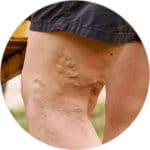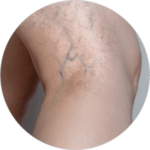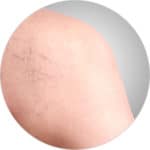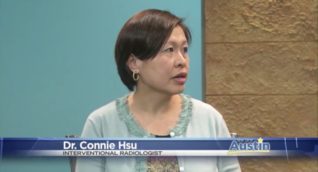Varicose veins are the most common and most visible forms of venous disease. These conditions can be symptom-free but can also lead to more serious disease such as the development blood clots. Varicose and spider veins can also be signs of chronic venous insufficiency, or the improper functioning of vein valves, which can lead to leg swelling, vein issues, skin changes, and leg or foot ulcers.

For more information about varicose veins and treatment available at ARA, see Varicose Vein Treatment with EVLT.

For more information about varicose veins and treatment available at ARA, see Varicose Vein Treatment with EVLT.

Venous disease is a common condition in which the one-way valves that keep blood moving toward the heart do not function properly, allowing blood to pool in the vessels of the legs and feet, which stretches and distorts the vessel walls. The pooling blood can cause enlarged vessels that become visible and may cause swelling, pain, itching and inflammation, and may lead to poor circulation, discoloration of the skin and ulcers. Varicose veins, reticular veins, and spider veins are several types of venous disease. Venous disease is very treatable with a range of options available as outpatient treatment at ARA, including EVLT and sclerotherapy.
About 50 to 55% of women and 40 to 45% of men in the U.S. suffer from some type of vein problem. Getting relief from venous disease is a great step to improve your overall health.
When blood pools in leg veins because of failed valves, it can cause minor injuries to become large sores that won’t heal called ulcers. The abnormally high pressure in the faulty vein causes damage to the tissues and leads to leakage of the blood into surrounding tissues, which can cause a darkening of the skin, and keeps blood from circulating properly around a wound, which prevents the wound from healing. Non-healing ulcers are painful, smelly, and bothersome, and they can also lead to systemic infection and can also lead to tissue loosening and getting into the bloodstream, which can cause dangerous clots. Often, repairing the condition that is causing the ulcer will result in complete healing. EVLT and sclerotherapy can be used to improve the circulation of the area around the wound, promoting healthier tissue.
Non-healing ulcers can also be the result of peripheral arterial disease (PAD), in which the arteries leading to the area are blocked. For more information about PAD and its treatment at ARA, please see Peripheral Arterial Disease (PAD).

